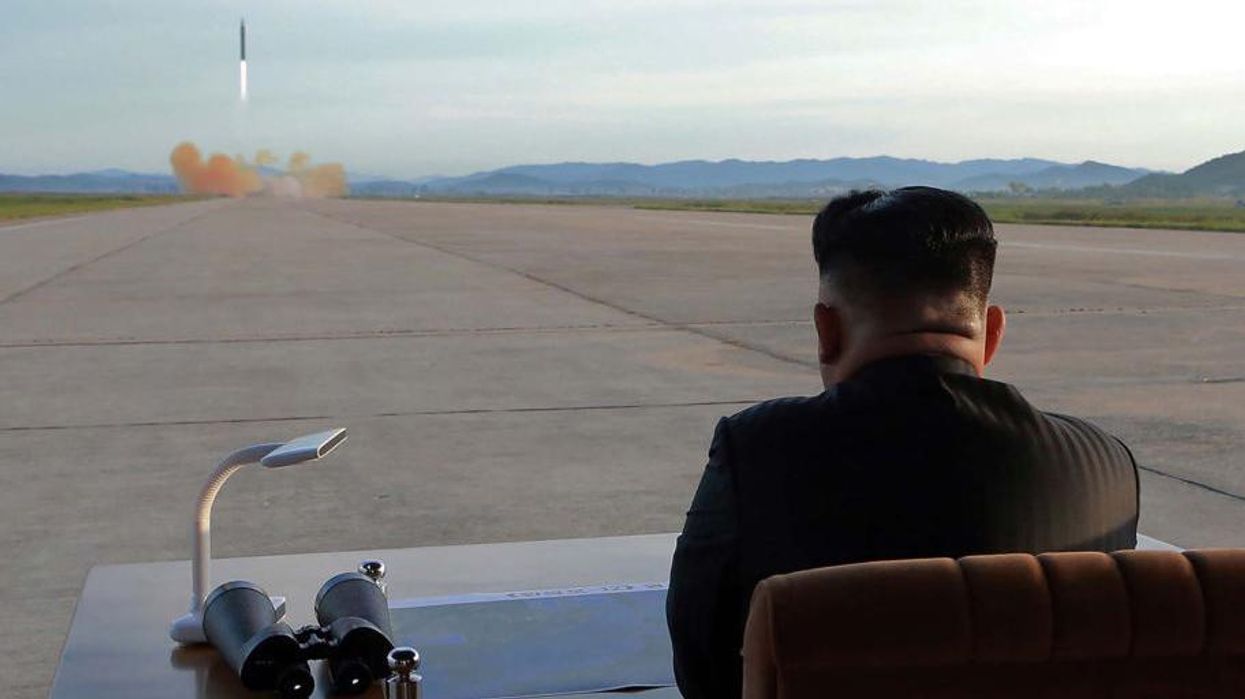Greg Evans
Oct 17, 2017

Picture:
STR/AFP/Getty Images
2017 has seen North Korea ramp up their missile testing.
Since February, the secretive communist state has conducted 15 tests, most of which have been successful.
These tests include firing a missile over Japan and reportedly conducting a nuclear test in September which caused tremors across the border in China.
Experts now believe that North Korea now have the potential to hit New York with a "hell of a missile", quite concerning information giving Donald Trump's unwillingness to back down from their growing dispute.
As stories emerge each week about North Korea's arsenal and capabilities, it can be a little bewildering and scary.
Can they really launch a missile at the United States? What about the UK and the rest of Europe?
ABC News have researched all of the missiles that North Korea have tested so far and studied their potential trajectory.
Here is a rough breakdown of their findings.
Scud missiles:
By far North Korea's biggest weapon haul are their short-range ballistic missiles or scud. Of these the one with the longest range is the ER Scud, which can travel up to 1,000 kilometers away.
There are also the Scud-C MaRV and Scud-B MaRV missiles which have the ability to evade Terminal High Area Defence systems.
Major locations in Scud range include:
- South Korea
- Osaka, Japan
Medium-range ballistic missiles:
These can reach up to 2,000 km away and have been very reliable under Kim Jong-un's regime, with only two out of nine tests failing.
This puts the following locations under threat.
- All of Japan, including Tokyo
- North East China
- Eastern Mongolia
- South East Russia
Submarine missiles:
Reports suggest that North Korea have been trying to test launches from submarines in Sinpo shipyard but only three of six tests have been successful so far.
At the moment these missile only have a short range of just 1,200 km but could potentially reach 2,800 km meaning that the threat remains in the Pacific area
Intermediate-range ballistic missiles:
Intermediate missiles have a far greater range than those already listed, with a potential reach of 4,500 km.
These missiles have proved to be unpredictable for the Kim regime with only three of the 14 tests proving to be a success.
However two of the successful test were the Hwasong-12 tests which flew over northern Japan.
The extended range of these missiles would be able to reach:
- Most of China
- All of eastern Russia
- Most countries in South-East Asia including Thailand and Philippines
- US territory of Guam
Intercontinental ballistic missiles:
North Korea have managed to test two of their intercontinental ballistic missiles this year but they were both successful.
Otherwise known as the Hwasong-14, these missiles have a huge range of 8,500 km which would put the following locations at threat.
- Middle East
- India
- All of Eastern Europe
- Turkey
- Greece
- Scandinavia
- Germany
- North East Italy
- Scotland
- North of England
- North East Egypt
- Northern Somalia
- Most of Australia, including Perth and Brisbane
- Alaska, USA
- Pacific North West area, USA
- Western Canada
Other missiles:
Most recently North Korea have managed to test a missile with a maximum range of 10,000 km.
This concerning fact would put the following places at risk.
- All of Australia
- Auckland, New Zealand
- All of Europe, barring parts of southern Spain and Portugal
- All of Egypt
- Tunisia
- Most of Libya
- Most of East Africa
- Los Angeles, USA
- Washington DC, USA (dependent on Earth rotation)
- New York City, USA (dependent on Earth rotation)
- North West Mexico
Space launch vehicles:
Lastly, North Korea also have a array of space launch vehicle which would allow them to send weapons into orbit.
Their range is a staggering 15,000 km which would put most of the planet at risk.
Thankfully these have only been tested with light missiles and would be unlikely to reach their maximum range when carrying a warhead.
For the purpose of this article the only locations on Earth considered out of range of these missiles are as follows:
- Brazil
- Argentina
- Chile
- Bolivia
- Peru
- Paraguay
- Uruguay
- South Ecuador
- South Venezuela
- South Colombia
- South Guyana
- South Suriname
- South French Guiana
- Parts of Antarctica
Before you start worrying and begin to make plans to move to South America it should be stated that most of North Korea's missile capabilities are mostly untested.
This means in terms of a trusted arsenal they are mainly limited to their short range missiles, which can only reach their neighbours in the Pacific.
HT ABC News
More: North Korea may have nuked itself out of a nuclear test site
Top 100
The Conversation (0)













